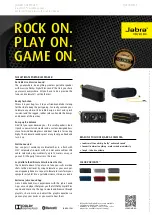
7
INTRODUCTION TO AMATEUR RADIO
Your transceiver is the perfect first radio for anyone entering the
exciting world of amateur radio, as well as a great additional
transceiver for the experienced amateur radio operator. Your
transceiver opens a door for you to the world from almost any-
where! All you need is an Amateur Radio Operator’s License
(Technician Class or higher) issued by the Federal Communica-
tions Commission (FCC). If you do not have a license, it is easier
than ever to get one, and help from licensed operators is avail-
able. Here are a few tips to help you get started.
You can turn on your transceiver and scan the entire band to hear
what is going on; however, do not attempt to transmit until
you get your license. If you transmit without a license, you are
in violation of federal law that can lead to severe penalties. Note
that ham operators take the FCC rules very seriously and want
nothing to do with “bootleggers” — their term for people who op-
erate without a license.
Find out if there is a ham radio club in your area. Most clubs wel-
come newcomers and are glad to help you get your license.
There are thousands of clubs across the country, so there is prob-
ably one in or near your community. The staff at your local Ra-
dioShack store often can help you locate a club.
If you do not hear anyone talking about a local club as you listen
to local transmissions, write to the American Radio Relay League
(ARRL) at the following address to find out how to contact a local
affiliate. The ARRL is the national organization representing am-
ateur radio in the United States. The league has more than
150,000 members. Most are ham operators, or members in the
process of obtaining their license.
The American Radio Relay League
225 Main Street
Newington, CT 06111
http://www.arrl.org
19-1102RPO.fm Page 7 Friday, June 25, 1999 11:17 AM
Summary of Contents for 19-1102
Page 46: ...46 NOTES...
Page 47: ...47...








































